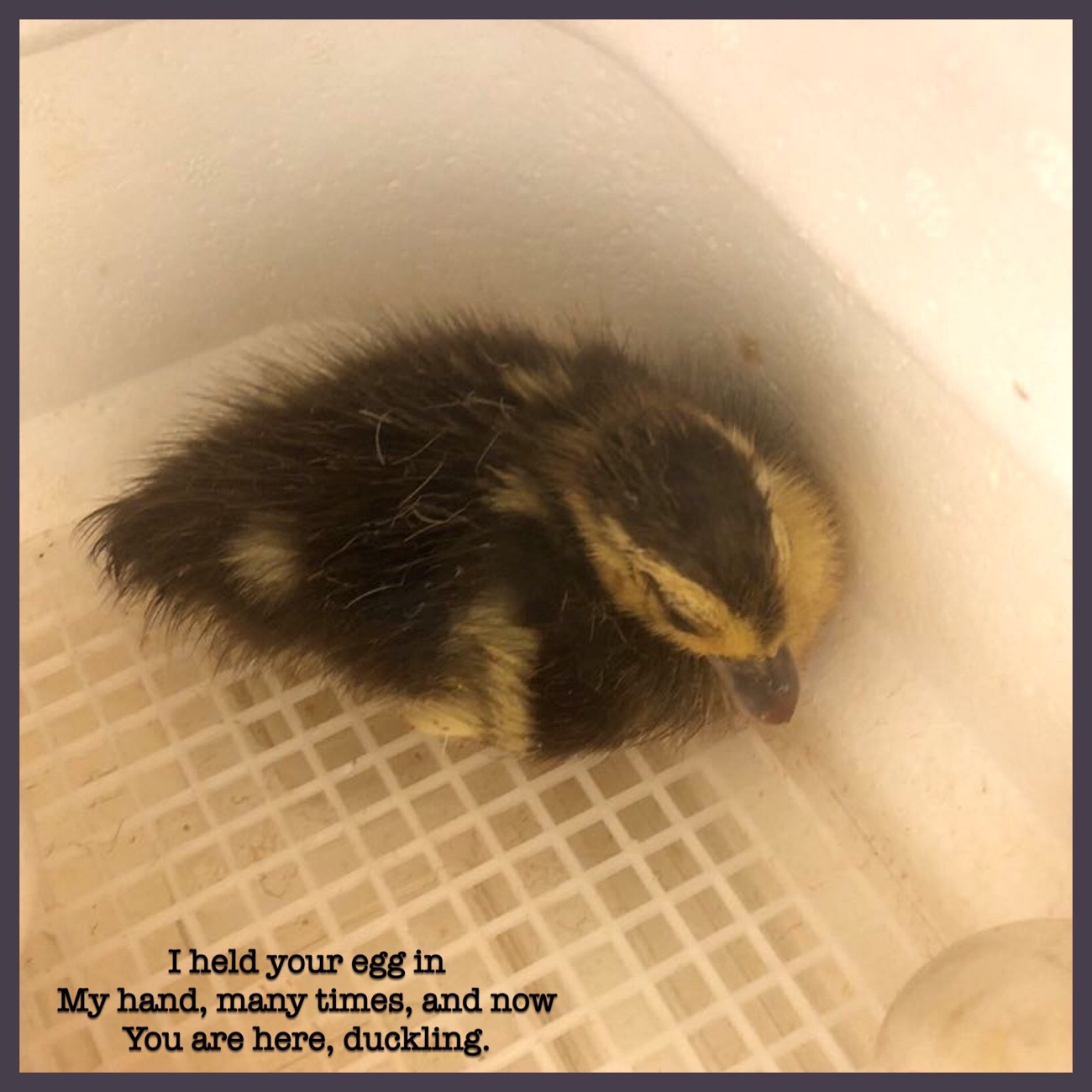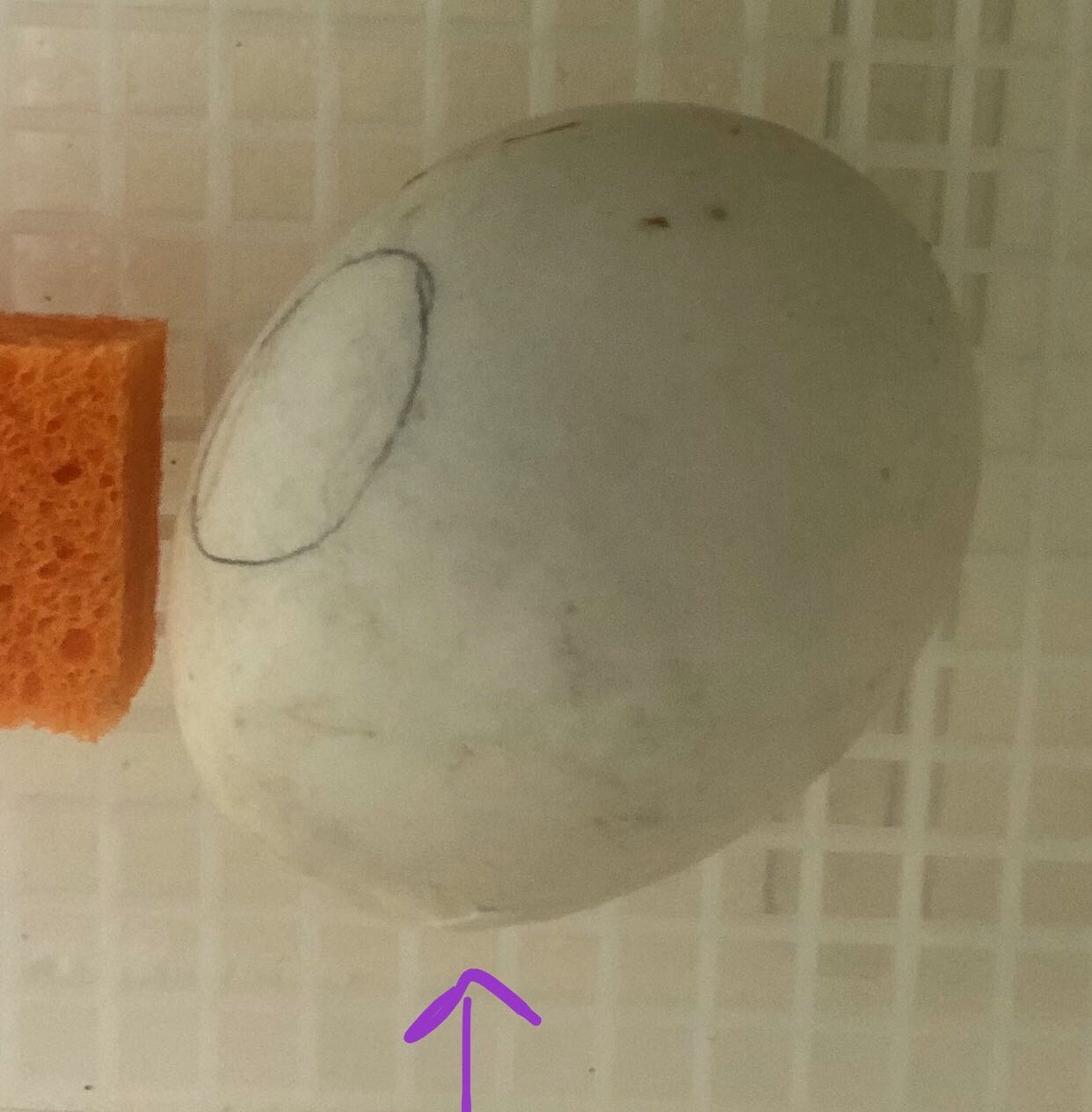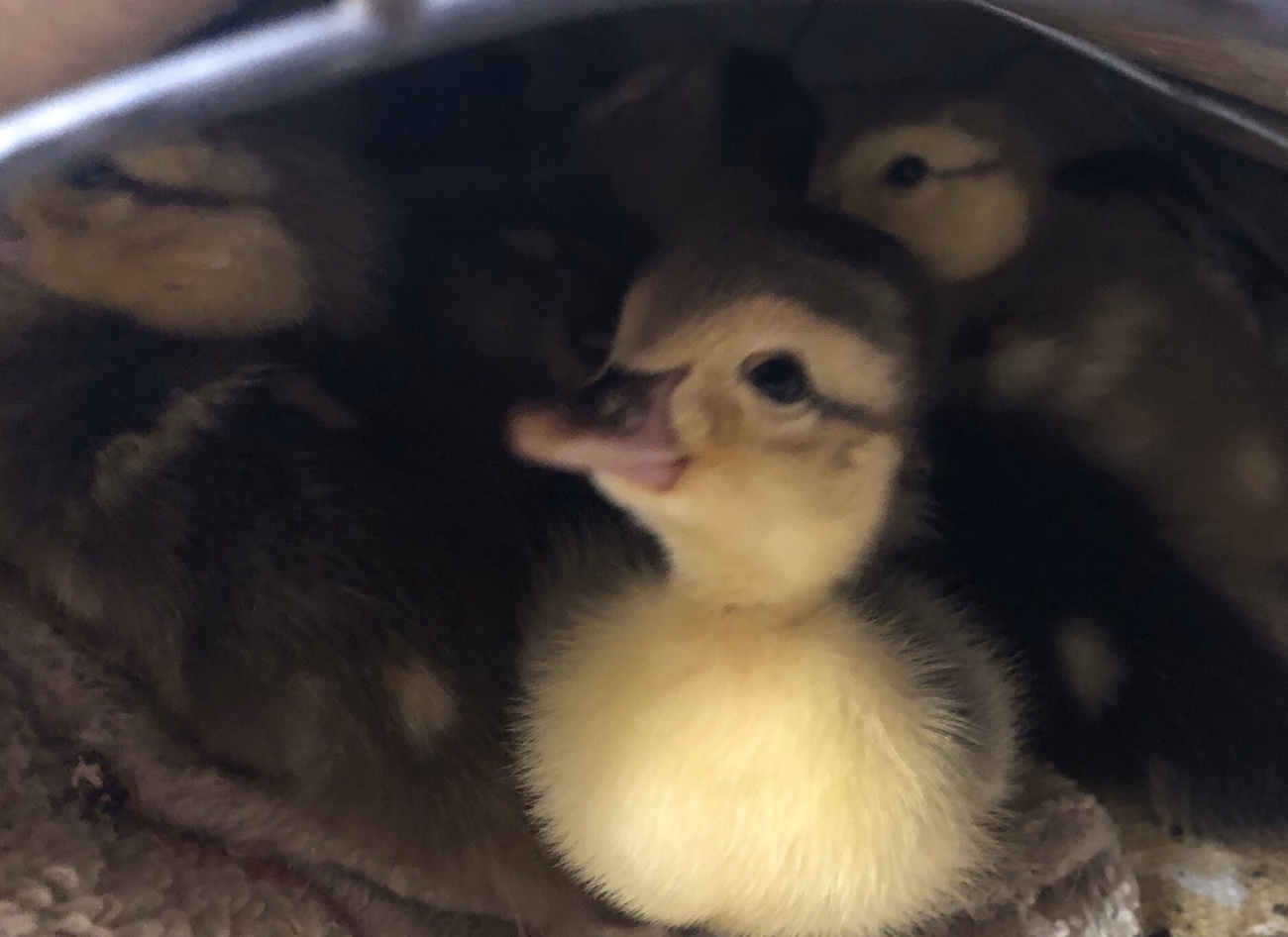
Another hatch has concluded, and there is a very gunky hatcher waiting to be cleaned and disinfected…but before I jump into the less glamorous part of incubating eggs, let’s review how this hatch went.
After rehoming the last batch of Muscovy ducklings, another individual expressed interest in ducklings, so I popped some eggs in the incubator and prepared for 35+ days of TLC. Compared to incubating chicken eggs (~21 days to hatch), Muscovy eggs are a long haul – plus, I mist and cool by hand, in addition to hand-turning three times a day, so it’s very hands-on.

Periodic candling (I begin at 10 days because that’s when status – clear, blood ring, developing – can most effectively be determined) showed that all of the eggs were fertile, but one was significantly behind in development, and that egg eventually quit. By the time lockdown arrived, there were 14 (of the original 15) eggs going into the hatcher.
On day 33, an egg pipped externally – a great sign. It took the duckling almost two more days to emerge from the egg. This isn’t unusual with waterfowl – they take much longer than chickens to hatch, so I waited and watched. Over the next couple of days, 2 more ducklings pipped, zipped, and hatched. And then, crickets.

Well, not exactly crickets. The hatch seemed to slow down and while the ducklings were pipping externally, they weren’t doing it as steadily as I had expected. Nonetheless, I know from experience that there’s no rushing a hatch, and I just monitored the activity and temperature/humidity for the next couple of days…but I was growing concerned.
When the hatch reached day 37 and only three ducklings had hatched, I knew there was a problem; while it’s normal for a hatch to either begin a couple of days early or end a couple of days “late”, I know from experience that the hatch should conclude right around day 35/36. Unhatched eggs on day 37 was a red flag due to hatching history, so I gathered my tools and prepared to examine the unhatched eggs and assist where needed.
⚠️Before you consider assisting in a hatch, I highly recommended reviewing Pyxis’s comprehensive Guide to Assisted Hatching for All Poultry – actually, read it several times and keep it handy, should you need to reference it when you’re attempting to assist. You don’t want to find yourself in a situation where you’re not sure how to proceed and making the wrong move could injure or even kill the hatchling. Also, before you assist, be sure that you’re prepared for the consequences of your actions: the hatchling may have physical problems that caused the hatching difficulty or it simply may not survive, even with your intervention. These are the very real risks involved with helping birds hatch.
When I removed the eggs from the incubator and examined them, there were several external pips that I hadn’t been able to see previously. I began with those eggs, very cautiously expanding the holes they had created by pipping. Most were already “shrinkwrapped” due to the length of time that had elapsed from externally pipping, and were tightly bound in their internal membranes. I took my nearly all-purpose coconut oil and generously lubricated the membranes to see if the vessels were still active – most were – and then gently pushed the membrane away from the head area. This is a delicate operation and needs to be performed slowly to avoid damaging the blood vessels in the membrane. Once the head area was unobstructed, I ensured the exposed membrane was well-oiled (should become transparent) and then I slowly broke off the shell around the duckling, leaving just the bottom half to third, in case the duckling was still absorbing yolk.
Once each duckling was “freed” in this way, they went back into the incubator to finish up their vessel and yolk absorption. At least a couple still had several hours’ worth of yolk absorption to do, and to avoid having them kick free of the egg too quickly and risk damaging the yolk sac, I placed them in little cups so that they remained upright and confined; when the hatchlings are ready, they free themselves from the cups.
Seven ducklings were assisted in this way. Sadly, a couple of eggs were late quitters and the ducklings were dead in shell already, without having pipped at all – indicating that they had quit prior to lockdown; a couple of others simply failed to hatch, one had externally pipped, and the other had not. It’s tough to lose any hatchlings, especially when they’ve come so close to hatching, but it’s often a part of incubating eggs.
After all was said and done, 10 ducklings hatched. Two are still in the incubator, the last of the assisted ducklings that spent some time in cups to finish absorbing their yolks. Both are active this morning, so I think the outlook is bright for them – Muscovy are uniquely hardy ducklings, right from the beginning. After a difficult start, these two should be indistinguishable from their hatchmates soon.

This was likely the last Muscovy hatch of the year – the girls appear to have begun their seasonal break and should resume laying in the Spring. While the hatch didn’t go as smoothly as the last time, it was a good reminder that hatching can be a difficult business, for both the hatchlings and for the person running the incubators. Regardless of the stresses of incubating, I will continue to do it because the rewards are great: there are fluffy ducklings in the brooder, growing by the minute it seems, ready to enjoy some adventures! It’s miraculous each and every time, and I feel fortunate to have been a part of the amazing process that is incubation and hatching, Now, I’m off to scrub out that hatcher.

Comments are closed.